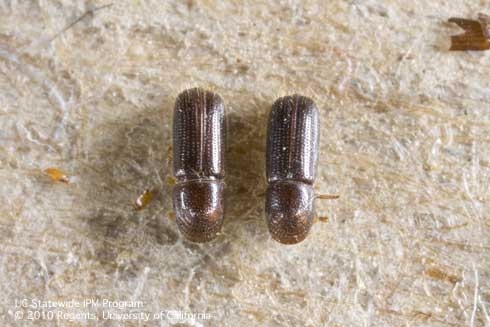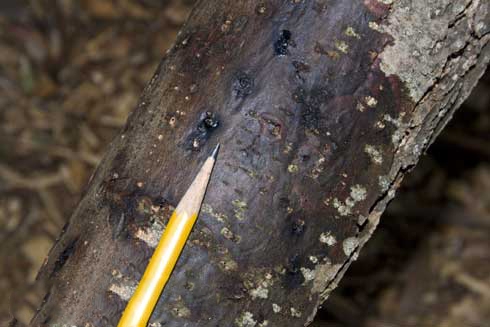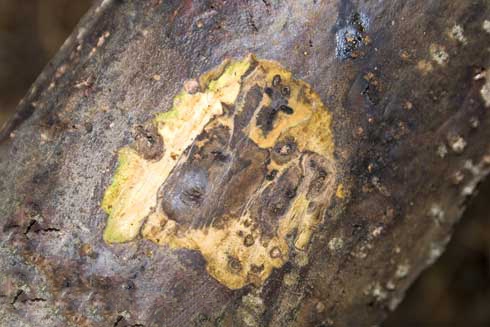[From the December 2014 issue of the UC IPM Green Bulletin]

Hosts
Known hosts include walnuts (Juglans species) and wingnuts (Pterocarya species). In California the disease has been observed on both native species of black walnut, Juglans californica and J. hindsii, and both are quite susceptible. English walnut, J. regia, is affected to a lesser degree but is typically grown grafted on a hybrid rootstock, which is susceptible, so symptoms of the disease may be observed in walnut orchards as well. The eastern black walnut, Juglans nigra, is highly susceptible. Although of limited importance and distribution in California, this species is grown in eastern North America for its excellent wood and in much of western North America as a shade tree. Therefore, TCD represents a threat throughout most of the United States. Eastern black walnut appears to have been the key host species that provided for the range expansion of the disease in most of the western states.Wingnut, a less frequently planted tree in California landscapes, is also susceptible to the disease.
Symptoms and Signs


How is It Controlled?
Currently, no insecticides or fungicides have been shown to save trees affected with TCD. Thus, it is important that infested wood is not moved off site. Infested trees should be taken down and ground or burned (where allowed) on site. Because the beetles are very small and difficult to detect, it is important that freshly cut walnut branches, logs, or burls not be moved or shipped from infested areas, not even for woodworking purposes. Seasoning wood on site for 2-3 years should allow walnut twig beetles and other woodborers time to emerge at the site of infestation, but it is prudent to have all wood inspected by a knowledgeable entomologist or cooperative extension specialist prior to movement of the material from the site, even when properly seasoned and de-barked.
For more information, visit the UC IPM web page on Thousand Cankers disease.
Author - Interim County Director; Bay Area Environmental Horticulture and Urban Forestry Advisor